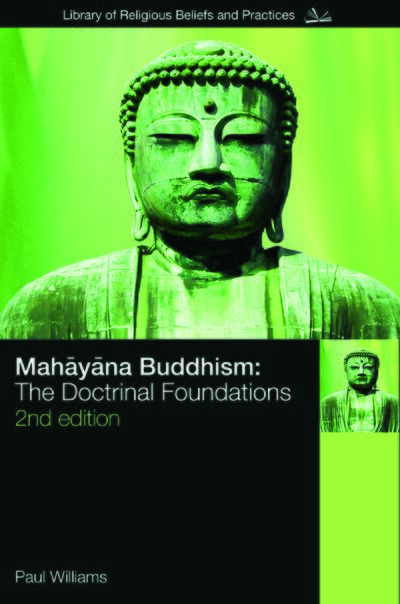Mahāyāna Buddhism: The Doctrinal Foundations
< Books
| Line 43: | Line 43: | ||
**{{i|''The'' Dasheng qixinlun (Ta-sheng ch’i-hsin lun) ''and the''<br> Tathagatagarbha ''in East Asia''|115}} | **{{i|''The'' Dasheng qixinlun (Ta-sheng ch’i-hsin lun) ''and the''<br> Tathagatagarbha ''in East Asia''|115}} | ||
**{{i|''Dōgen on the Buddha-nature''|119}} | **{{i|''Dōgen on the Buddha-nature''|119}} | ||
| − | **{{i|''A note on some contemporary issues: Critical Buddhism and a debate on<br>not-Self in Thai Buddhism''|122}} | + | **{{i|''A note on some contemporary issues: Critical Buddhism and a debate on<br> not-Self in Thai Buddhism''|122}} |
**{{i|''Critical Buddhism''|122}} | **{{i|''Critical Buddhism''|122}} | ||
**{{i|''Not-Self in contemporary Thai Buddhism''|125}} | **{{i|''Not-Self in contemporary Thai Buddhism''|125}} | ||
*{{i|'''6 Huayan – the Flower Garland tradition'''|'''129'''}} | *{{i|'''6 Huayan – the Flower Garland tradition'''|'''129'''}} | ||
| − | Buddhism in China 129 | + | **{{i|''Buddhism in China''|129}} |
| − | The | + | **{{i|''The'' Avataṃsaka Sūtra|132}} |
| − | The Huayan tradition in China 138 | + | **{{i|''The Huayan tradition in China''|138}} |
| − | Huayan thought – Fazang’s | + | **{{i|''Huayan thought – Fazang’s 'Treatise on the Golden Lion' ''|141}} |
| − | A note on some aspects of Huayan practice 144 | + | **{{i|''A note on some aspects of Huayan practice''|144}} |
| − | The | + | **{{i|''The'' Avataṃsaka Sūtra ''and Vairocana in Buddhist art''|146}} |
| − | 7 The | + | *{{i|'''7 The ''Saddharmapuṇḍarīka (Lotus) Sūtra'' and its influences'''|'''149'''}} |
| − | A note on Tiantai (Tendai) 161 | + | **{{i|''A note on Tiantai (Tendai)''|161}} |
| − | Nichiren | + | **{{i|''Nichiren Shōnin and his tradition''|165}} |
| − | 8 On the bodies of the Buddha 172 | + | *{{i|'''8 On the bodies of the Buddha'''|'''172'''}} |
Prolegomenon to the MahAyAna 172 | Prolegomenon to the MahAyAna 172 | ||
The bodies of the Buddha and the philosophy of emptiness 176 | The bodies of the Buddha and the philosophy of emptiness 176 | ||
Revision as of 14:11, 26 June 2020
Originating in India, Mahayana Buddhism spread across Asia, becoming the prevalent form of Buddhism in Tibet and East Asia. Over the last twenty-five years Western interest in Mahayana has increased considerably, reflected both in the quantity of scholarly material produced and in the attraction of Westerners towards Tibetan Buddhism and Zen.
Paul Williams’ Mahayana Buddhism is widely regarded as the standard introduction to the field, used internationally for teaching and research and has been translated into several European and Asian languages. This new edition has been fully revised throughout in the light of the wealth of new studies and focuses on the religion’s diversity and richness. It includes much more material on China and Japan, with appropriate reference to Nepal, and for students who wish to carry their study further there is a much-expanded bibliography and extensive footnotes and cross-referencing. Everyone studying this important tradition will find Williams’ book the ideal companion to their studies. (Source: Routledge)
| Citation | Williams, Paul. Mahayana Buddhism: The Doctrinal Foundations. 2nd ed. The Library of Religious Beliefs and Practices. New York: Routledge, 2009. https://archive.org/details/mahayanabuddhismthedoctrinalfoundationspaulwilliamsroutledgeseealtruismandreality_202003_445_W/mode/2up. |
|---|---|

